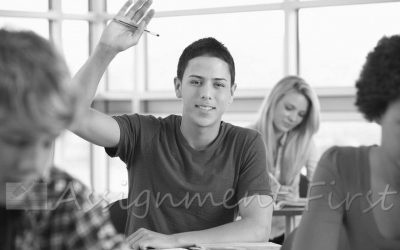留学生作业代写:格式塔的知觉理论
格式塔理论还解释了人们如何将所有的视觉元素组织在一个单一的群体中。彼得和保罗花瓶是现代艺术最伟大的例子之一。这个错觉是1915年由丹麦心理学家埃德加·鲁宾创造的。
根据格式塔的知觉理论,物体或图像被感知为图形或地面。图形是焦点,地面与图像的背景有关。彼得和保罗花瓶是一个典型的人物/地面透视的例子。这张图片展示了一个黑色花瓶,背景是白色的,或者两个白色的脸坐在一个位置上,两个脸都对着对方,背景是黑色的。当人们看着一张图片时,他们会设置一个焦点和背景。图像的组成被分成焦点和背景,这是下意识的。因此,图像的焦点和背景告诉我们什么必须聚焦,什么可以简单地忽略。在这幅图像中,感知比其他任何东西都更重要。
这是一个著名的知觉错觉。这个人物创造了一个年轻女孩和一个老妇人的幻觉。可以看到老妇人朝左边看,而女孩则朝右肩看。这张图片显示了人物/地面的知觉错觉。这种错觉由来已久。1888年,人们第一次在德国明信片上看到它。“知觉”也是这种错觉的主要内容。
这是另一个模糊错觉的例子。这张照片也有两张脸,一张是年轻人,另一张是老人。这种反转错觉有助于理解大脑如何解释静态图像。
艺术家们试图通过这些艺术作品来理解大脑的功能成像。他想要理解大脑大脑如何在视觉艺术中决定什么是地面,什么是图形。艺术家们试图解释,形状的大小有助于区分地面和人物,因为视觉图像的较小部分往往是人物。这些图像说明,图形/地面组织已经在2D合成中使用。“图形-背景反转被用作一种有意的视觉设计技术,在这种技术中,有意地交换现有图像的前景和背景颜色,以创建新的图像”(Goldreich, & Peterson, 2012)。
符号学是对符号和符号的研究。根据这个理论,每一个图像或物体都有符号和符号。这一理论认为,一个人看得越多,理解得越多。如果一个图像的符号和符号被理解,那么这个图像就会变得更加有趣和令人难忘。符号学的学术研究是为了识别世界上不同社会的符号并加以解释。虽然,这项研究最近得到了普及,但这是一个非常古老的概念理解图像。奥古斯丁是第一位提出符号研究的罗马哲学家。奥古斯丁认为,符号是文化与自然之间的联系(卡普兰,1995)。根据知觉系统,它总是为表现做好准备。此图像提供符号符号,即图像提供符号表示。照片中的脸都是白色的,面对面可能代表亲密。这种错觉表明,只有通过有意识的努力,才能看到图像的真实。图像获得了它自己的确定的位置。它的目的是在观众的头脑中创造感觉激活或大脑的处理。这幅图像涉及到大脑的潜在活动。这些图像在美学上是美丽的,并提供了反转地面的最好例子。根据艺术家自己是“一个国家可以作为一个基本原则:当两个字段有共同的边界,和一个被视为图和其他地面,直接的知觉经验的特征是塑造的影响而出现的共同边界只在一个字段或字段和运营操作比另一个更强烈”(鲁宾,1915)。
留学生作业代写:格式塔的知觉理论
Gestalt theory also explains that how people organize all the visual elements in one single group. One of the greatest examples of modern art is the Peter and Paul Vase. This illusion was created by Danish psychologist Edgar Rubin in 1915.
According to the Gestalt’s theory of perception, the objects or images are perceived as figure or the ground. The figure is the focus and ground is related to the background o the image. Peter and Paul vase is the classic example of figure/ground perspective. This image displays a black vase with the white background or the two white faces sitting in a position, where both are facing each other with a black background. Whenever people look towards an image, they set a focus point and a background. The composition of an image is divided in to focus and background and this occurs subconsciously. Thus focus and ground of an image informs about what have to be focused and what could be simply ignored. Perception was something that was more involved in this image than any other thing.
This is a famous perceptual illusion. This figure creates the illusion of a young girl and an old woman. The old woman can be seen looking towards the left, while the girl is looking towards her right shoulder. The image displays the perceptual illusion of figure/ground. This kind of illusion has old history. It was first seen on the German postcard in 1888. The ‘perception’ is the main thing in this illusion as well.
This is another example of ambiguous illusion. This image also has two faces, one of young man and other of an old man. This kind of reversal illusions helps to understand that how brain interpret the static image.
The artists have tried to understand the functional brain imaging through these art works. He wanted to achieve the understanding of the brain that how does brain decides in the visual art that what is ground and what is figure. The artists have tried to explain that sizes of the shapes can help in distinguishing between ground and figure, because smaller parts of the visual image are often figures. These images explain that, figure/ground organizations have been used in a 2D composition. “Figure–ground reversal are used as an intentional visual design technique in which an existing image’s foreground and background colors are purposely swapped to create new images” (Goldreich, & Peterson, 2012)
Semiotics is the study of signs and symbols. According to this theory every image or object has signs and symbols. This theory states that more a person sees, more he understands. If the signs and symbols of an image are understood, then that image becomes more interesting and memorable. The academic study of Semiotics is meant to identify signs of different societies in the world and to explain them. Though, this study has gained popularity recently, but this a very old concept of understanding images. Augustine was the first philosopher from Rome, who proposed the study of signs. According to Augustine, signs were the connection between the culture and nature (Kaplan, 1995). According to the perceptual system, it is always ready for the representation. This image provides the symbolic signs, which means that the image provides the symbolic representation. The faces in the image are seen in white, facing each other may represent intimacy. This illusion states that the reality of the image could only be seen through conscious efforts. The image acquires the definite position of its own. It is meant to create sensory activation or the processing of the brain in the minds of audiences. This image involves potential activity of the brain. The images are aesthetically beautiful and provide the best example of reversal ground. According to the artist himself “One can then state as a fundamental principle: When two fields have a common border, and one is seen as figure and the other as ground, the immediate perceptual experience is characterized by a shaping effect which emerges from the common border of the fields and which operates only on one field or operates more strongly on one than on the other” (Rubin, 1915).



